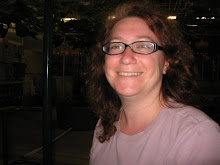How to fold a cloth diaper
Many people ask why they are called "prefolds" if you still have to fold them! It is confusing, but essentially cloth diapers used to be long rectangles of gauze, called flats. In fact, when many people think of cloth diapers, they think of those and the complex folds they used to have to do. Prefolds are called prefolds because the fabric is sewn with extra layers, for extra absorbancy, in the middle. A preemie prefold has 2 layers, 4 layers 2 layers (usually written 2x4x2) and a premium prefold has 4x8x4.
Folding a cloth diaper doesn't need to be difficult, and once you learn to do it you can put on a prefold as quickly as you can put on a fitted. In fact many people love the custom fit they can get with a prefold they fold themselves, plus there is an art to it. Also the absorbancy and price can't be beat!
Here are four great folds for a prefold cloth diaper
1. Newspaper fold - you lie the diaper down on the wrap with the thicker part in the middle. Then fold up the front edge so it lines up with the front of the wrap. This makes a lot of padding in the front where a boy pees most but the fold is great for a girl too. Then bring in the two sides so the whole prefold is folded in thirds. Fan out the back a drop to make a pocket for the poop. Lay the baby down on top of the diaper and wrap and close it around him. No pins are needed if the wrap is snug but you may pin or snappi it, if you wish. The bummis and the bumkins both have a little pocket in the front that you can slip the front of the prefold into if you want to. Make sure there is no diaper sticking out - especially around the leg holes.

2. Sidewall (or Jelly Roll) fold - Lay the baby on the prefold, with it completely flat and unfolded. Roll in each side (long side next to thighs), at a slight angle so that the front gets smaller but the back wings stay out all the way. Bring up through legs and fold front if necessary. This fold makes a nice pocket for poop and is great for babies who are not eating solids yet. You can pin or snappi if you wish but if you have a snug wrap you won't need to.

3. Trifold - Take the prefold and put it down on the wrap so the thick padded part runs perpendicular to the diaper. The diaper is laying down the wide way and the top and bottom should be approximately the same height as your wrap. Fold each side in so it is in thirds and fits right in the wrap. This makes a thick pad right in the center. This fold is great for a girl because of the center padding - but it is so simple you'll want to use it for your boys too! Lay the baby down on the wrap and close it up. The bummis and bumkins wraps have pockets in the front if you want but they are not neccessary. Make sure no diaper is sticking out anywhere... especially around the leg holes. This fold has nothing to hold in the poop but the wrap should keep anything from leaking out.

4. The Bikini Twist - this is my favorite fold. Lay the baby on the diaper with the diaper the long way. Then simply twist the diaper all the way over at its midpoint. bring the diaper up and fasten it - either with pins or a snappi. It's so so simple, it looks great, it holds in the poop, and there is a lot of extra diaper at the waist so the diaper fits longer. I recommend this fold when someone calls or emails and says the infant prefold doesn't fit anymore but the premium prefold is too big.



